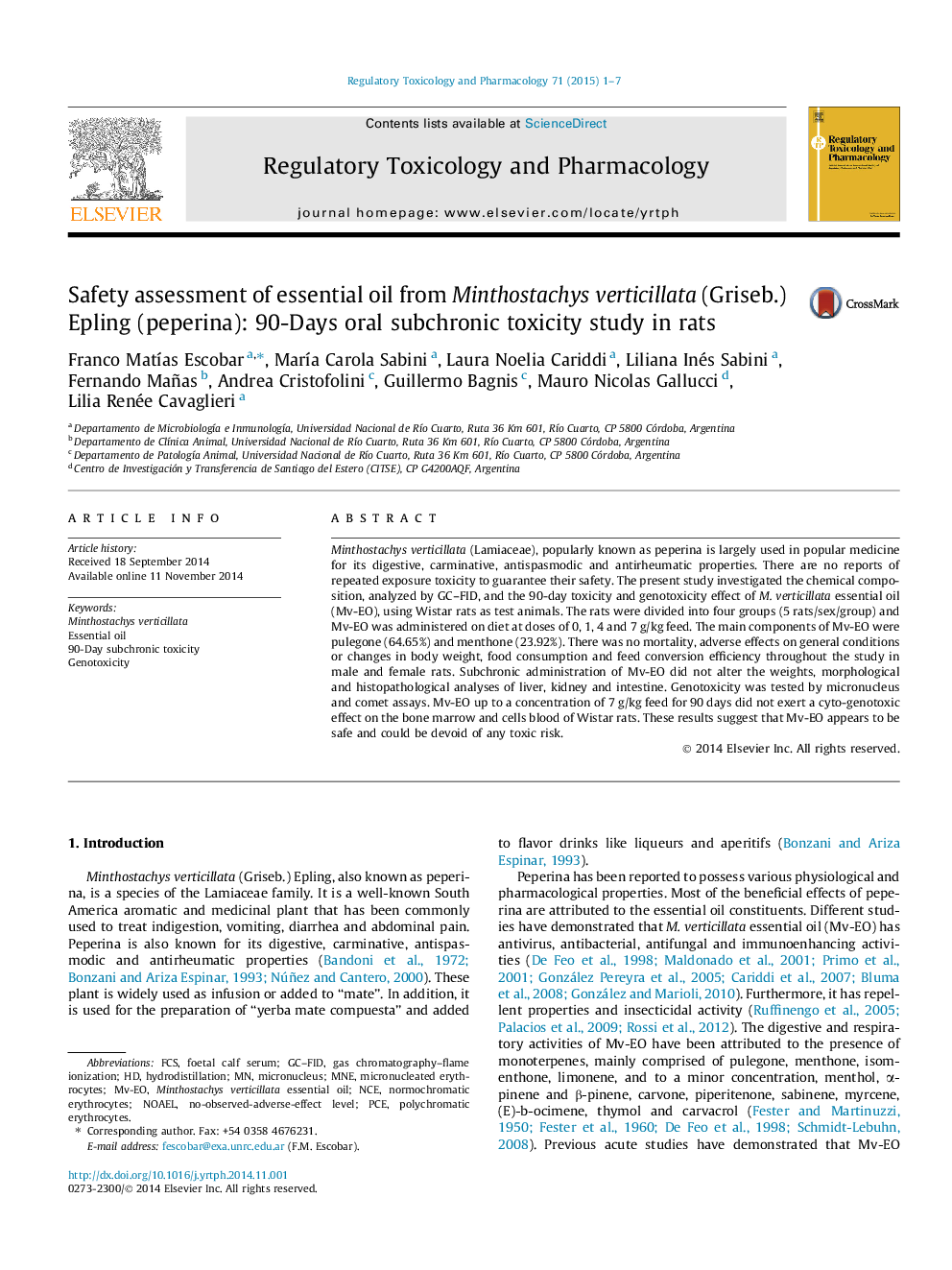| Article ID | Journal | Published Year | Pages | File Type |
|---|---|---|---|---|
| 5856624 | Regulatory Toxicology and Pharmacology | 2015 | 7 Pages |
â¢Subchronic toxicity of M. verticillata essential oil was studied.â¢The essential oil not induced 90-day toxicity and genotoxicity effect on Wistar rats.â¢The essential oil appears to be safe and could be devoid of any toxic risk.
Minthostachys verticillata (Lamiaceae), popularly known as peperina is largely used in popular medicine for its digestive, carminative, antispasmodic and antirheumatic properties. There are no reports of repeated exposure toxicity to guarantee their safety. The present study investigated the chemical composition, analyzed by GC-FID, and the 90-day toxicity and genotoxicity effect of M. verticillata essential oil (Mv-EO), using Wistar rats as test animals. The rats were divided into four groups (5Â rats/sex/group) and Mv-EO was administered on diet at doses of 0, 1, 4 and 7Â g/kg feed. The main components of Mv-EO were pulegone (64.65%) and menthone (23.92%). There was no mortality, adverse effects on general conditions or changes in body weight, food consumption and feed conversion efficiency throughout the study in male and female rats. Subchronic administration of Mv-EO did not alter the weights, morphological and histopathological analyses of liver, kidney and intestine. Genotoxicity was tested by micronucleus and comet assays. Mv-EO up to a concentration of 7Â g/kg feed for 90Â days did not exert a cyto-genotoxic effect on the bone marrow and cells blood of Wistar rats. These results suggest that Mv-EO appears to be safe and could be devoid of any toxic risk.
Graphical abstractDownload full-size image
